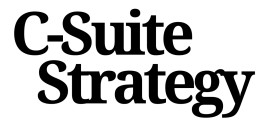
Understanding the Role of the Board in Strategic Planning
The Board's Cornerstone in Strategic Planning
In the intricate architecture of organizational strategy, the board of directors stands as a pivotal cornerstone. Recognizing its role in strategic planning is fundamental to the success of any nonprofit or corporate institution. The dynamic interplay between the board and strategic planning not only shapes the direction of the organization but also ensures that its mission and goals are steadfastly pursued.
An effective board is instrumental in guidance and oversight, aligning the organization’s mission with its operational plans. This involves a thorough understanding of the roles and responsibilities each board member holds. Board directors must engage in strategic discussions, providing a blueprint that the executive team can implement.
Furthermore, nonprofit organizations and school boards benefit greatly from board members who prioritize governance and strategic foresight. By fostering collaboration within the board, the organization gains a cohesive vision crafted through diverse perspectives. Members come together to participate in board meetings and development committees, reinforcing the organization's goals.
The strategy doesn't function in isolation but rather is enriched by continuous board development. This includes tailored board training programs and workshops aimed at enhancing individual skills and collective performance. Such programs are crucial in nurturing an effective board that actively supports the organization's strategic framework.
Ultimately, the board's involvement in strategic planning represents not only a foundational role but also a dynamic one, where ongoing evaluation and adaptation are key. Through active participation and leadership, board members ensure the organization remains on course, continually evolving in pursuit of its mission and serving its community effectively. These practices, when integrated holistically, lead to robust board development and governance excellence.
Building a Diverse and Skilled Board
Diversity and Expertise: The Keystone of a Competent Board
In the pursuit of strategic success, crafting a board that is both diverse and skilled stands as a cornerstone. This effort extends beyond sheer demographics; it involves integrating a wide array of perspectives, experiences, and expertise that collectively enhance the board's ability to guide the organization towards its mission. Creating a board environment where varied talents converge requires deliberate planning and thoughtful strategy. For nonprofit organizations, especially, incorporating members from different backgrounds can profoundly benefit community engagement and mission alignment. Diversity in this context includes not just racial or gender diversity, but diversity of thought, experience, and skills that match organizational goals. To ensure effective governance and strategic impact, boards should concentrate on the following aspects:- Skill-Based Selection: Matching the board members' skills with the organization's strategic needs is crucial. Skill gaps can be detrimental to achieving the organization's mission, and utilizing a development committee to assess the board's skill matrix is a proactive step.
- Ongoing Board Development: Regular board training and development play an essential role in maintaining a high-performing board. Tailored training programs help members understand their roles and responsibilities, encouraging a proactive approach to leadership.
- Community Representation: Particularly for school boards or nonprofit boards, it’s essential to reflect the community they serve to ensure their perspectives and needs are integrated into strategic planning.
- Established Best Practices: Implementing best practices in board recruitment can significantly enhance board composition. Engaging outside perspectives or consultants might offer new insights and elevate the board's capabilities.
Fostering Effective Communication and Collaboration
Strengthening Communication Pathways for Strategic Outcomes
In any successful nonprofit organization, fostering effective communication and collaboration among board members is crucial to aligning with the organization mission and achieving strategic goals. When board directors, along with the committee, collaborate effectively, they can formulate a sound development plan that ensures board initiatives propel forward with precision and purpose. A robust governance structure often facilitates clear communication channels between the board directors and administrative entities. This can be particularly effective when boards establish mechanisms for regular feedback, such as more engaging board meetings and dedicated development committee discussions. These settings provide an opportunity for all board members, including those on school boards or nonprofit organizations, to voice their perspectives and skills, fostering a culture of transparency and inclusion. Moreover, to embolden board performance, organizations might consider a structured approach through regular board training sessions. Not only do these activities help distill the roles responsibilities among members, but they also provide the necessary board support essential to navigate intricate board dynamics. Incorporating best practices in board training not only enhances the leadership acumen of individual board members but also contributes collectively to the sustainability of the organization mission. For boards looking to leverage community insights and drive mission-focused strategies, effective communication channels can be a bridge to harness external expertise. Coalescing support and insights from the community can enhance the organization's ability to make decisions that truly resonate with its mission and values. Finally, investing in technology solutions such as collaborative platforms may improve communication efficiencies. These tools can ease the coordination of shared efforts, keeping all board members aligned and informed. For additional insights on achieving strategic success, consider visiting the strategic coaching initiatives blog. Here, broader insights are shared regarding leveraging strategic coaching for leadership elevation, which can further aid in board member development.Implementing Continuous Education and Development
Commitment to Lifelong Learning
Establishing a culture of continuous education within a board is pivotal for fostering strategic success. Nonprofit organizations and other entities need to prioritize ongoing training that enhances the skills and capabilities of board members. This commitment to lifelong learning empowers the board to effectively navigate the nuanced challenges of governance and leadership. Integrating frequent training sessions into board meetings can help fortify the collective expertise of the group. Ensuring that board members, regardless of whether they serve on a school board or a nonprofit board, remain well-versed in best practices is essential. From understanding complex financial concepts to mastering the intricacies of their specific industry, training can serve as a vital tool in their development plan.Incorporating New Knowledge
Adopting a proactive approach to education involves leveraging contemporary knowledge to address emerging issues. By encouraging members to partake in seminars, conferences, or workshops, organizations can ensure their boards remain at the forefront of innovation and governance. This can also bolster board performance, aligning with the organization's mission and goals. Another strategy is to establish a dedicated development committee. This committee can be responsible for identifying educational opportunities that align with the broader aims of the organization. Their role includes curating resources and planning tailored training initiatives that support the growth of board directors.Enhancing Board Support
Effective board development relies on a framework of continuous support. It is crucial that members receive assistance through mentorship programs and peer learning. This structured support network helps bridge the gap between learning and practical application, transforming theoretical insights into effective governance strategies. Furthermore, fostering a commitment among the board to mutual development helps strengthen community ties and reinforce the organization's foundation. Encouraging a sharing culture amongst board members reinforces this commitment, cultivating a cohesive unit that thrives on collective success.Evaluating Board Performance and Accountability
Evaluating Board Impact through Performance Assessment
Effectively evaluating board performance is pivotal in aligning the board's actions with the organization's mission and goals. For nonprofit organizations and businesses alike, this assessment acts as a guiding compass, ensuring that the board's contributions remain strategically relevant and effective. A robust evaluation process involves several key components:- Establishing Clear Criteria: Criteria should be defined based on the board's roles and responsibilities. This includes assessing their alignment with the organization's community goals and mission, and how effectively board meetings contribute to decision-making.
- Engaging in Self-Evaluation: Encouraging board members to engage in self-evaluation promotes personal accountability. These insights can be invaluable for identifying strengths and areas for improvement in individual contributions and board dynamics.
- Collecting External Feedback: Input from stakeholders, such as development committees or community members, can provide objective perspectives. This external feedback helps ensure the board’s efforts resonate with broader organizational aims.
- Analyzing Board Interaction: Observing how board members collaborate and communicate during meetings reveals much about board dynamics. This can inform training initiatives or board development strategies, facilitating an effective board that quickly adapts to the evolving needs of the organization.














